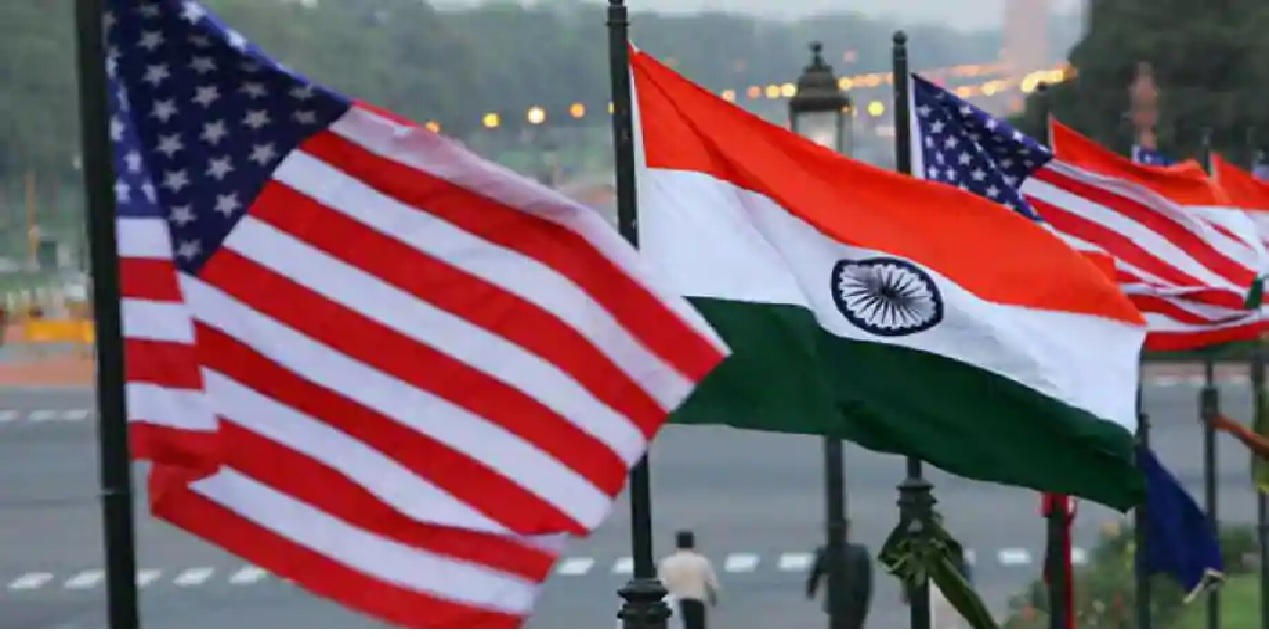Possible Motive
United States de-classified a document titled ‘US Strategic Framework for the Indo-Pacific on 13th of January. The de-classified document consists of 10 pages and is likely to be only a part of the larger document. It is extremely unusual to de-classify a document before its scheduled date, in this case it was to be in the year 2043. When one studies this document, there’s hardly anything that can be deemed classified. Whatever is written is not very different from US strategy documents in the public domain. In so far as US’s objectives in the Indo-Pacific are concerned, these were already known. Hence the motives of ‘de-classifying’ this document seems rather to convey a message domestically. One, it shows the efforts of the incumbent towards the Indo-Pacific. Second, it clearly lays out the threat or challenge from China. This would drive home two messages- one, that foreign policy on Indo-Pacific was serious and two, it would set a bar for the incoming Biden administration- if Biden waters down on Indo-Pacific or becomes more accommodating of China, he would be seen as a weak President. The recent US decision regarding Taiwan should also be seen from this perspective. Nonetheless the document is interesting and serves as another opportunity to discuss the Indo-Pacific. It perhaps intends to communicate to the countries of the Indo-Pacific and to China that the US is very much active in the region, and is going to be here for a long time. The document makes it clear that China’s attempts at regional hegemony will be challenged by a network of like-minded countries under the US leadership.
Description of US’s interests, Aims and Strategy in the Indo-Pacific.
US preeminence in the Indo-Pacific is deemed to be inevitable for US’s interests globally. The document lists out US’s national security challenges and the first and foremost is the question about maintaining US primacy in the Indo-Pacific region, ‘preventing China from establishing new, illiberal sphere of influence’, ensuring that North Korea does not threaten the US. US’s aim is to maintain ‘economic, diplomatic, and military access’ to the Indo-Pacific, which is described as ‘the most populous region of the world and more than one-third of the global economy’. It intends to achieve these goals by reinforcing its alliances, strengthening its partners and forging new relationships, with the overarching goal of ‘enhancing credibility and effectiveness’ of its alliances. This is aimed at preventing China’s attempts at dissolving US’s regional network. Ultimate goal is that ‘US and its partners on every continent are resistant to Chinese activities aimed at undermining their sovereignty, including through covert and coercive influence’.
Primary security concerns are listed in the exact order as follows: - proliferation, maritime security, terrorism and unresolved territorial disputes. Description of bilateral dynamics with China is termed as ‘strategic competition’. China’s economic, diplomatic and military influence will increase ‘in the near-term’ which will challenge US’s ‘ability to achieve its national interest. It also mentions China’s ambition to dominate cutting-edge technology, its influence operations, and ‘proliferation of its digital surveillance’.
On India
A lot of content is dedicated to India. Substantial consideration is given in the document to India as compared to others. On Page 3 under ‘desired end states’ which puts down what the US Indo-Pacific Strategy aims to achieve, India’s preferred partner on security would be the US and both the countries cooperate ‘to preserve maritime security and counter Chinese influence in South and Southeast Asia and other regions of mutual concern’ and ‘India maintains the capacity to counter border provocations by China’ which indicates the direction of bilateral defence cooperation. India would be preeminent in South Asia and ‘takes the leadership role’ in Indian Ocean security, ‘increases engagement with Southeast Asia’ and deepens defence and diplomatic cooperation with US’s regional allies. India also somewhat has the same aims, particularly when it comes to its neighbourhood. India has always sought greater US focus on the Indian Ocean, often flagged how the USPACOM ended at India’s eastern shores. The document does not hint at any alteration of existing US naval commands so in all probability it would empower India comprehensively to manage Indian Ocean by itself. The usage of the term ‘Indian Ocean’ instead of ‘Indian Ocean Region’ is interesting. Geographical scope of India’s Indo-Pacific space and that of the US was always at variation; this document makes it clear that India’s Western side is out of the American Indo-Pacific purview.
There is no mention of Pakistan which means that the US Central Command would continue to be in charge of that sphere. One has to see if India and US have common interests there. Although it talks of ‘align[ing] our Indo-Pacific Strategy with those of Australia, India and Japan’. Yet for a once-classified paper, details are missing. A role for bilateral cooperation in the Indian Ocean is however mentioned, wherein both parties would ensure unimpeded freedom of commerce, transparent debt-practices’ and ‘peaceful resolution of territorial disputes’.
There’s an entire section dedicated to ‘India and South Asia’ where the US objective is to 'accelerate India’s rise and as a net provider of security’. There’s emphasis on strengthen Indian military which can cooperate with US on shared interests. This would be achieved through interoperability, technology transfer, enhance India’s status as a major defence partner’ and ‘encourage Indian engagement beyond the Indian Ocean Region’. US is interested for greater Indian ‘leadership’ in EAS and ADMM+. The US-India bilateral relations would enable India to meet continental challenge from China- border dispute and access to water through the Himalayas. This seems slightly contrary to the mutual goals (mentioned in previous paragraph) in the Indian Ocean that spoke about peaceful resolution of territorial disputes- which means that bit is hinting at Pakistan.
On QUAD, Southeast Asia, Japan, Australia and others.
The quadrilateral security framework is already in place but there is no elaboration on what exactly the QUAD intends to do. Of course the 2020 Quad Foreign Ministerial meeting was clear in this regard but it is interesting how the ‘classified’ strategy paper had no details on the QUAD. Besides, trilateral and mini-lateral type of engagement is prescribed amongst the QUAD members.
A militarily modernised Japan is designed to emerge as a ‘technological pillar of the Indo-Pacific security architecture’. Japan would work with US and India in South Asia in infrastructure development. There is only a passing reference to Australia where it is mentioned under QUAD and that trilateral cooperation between US, Japan and Australia will be deepened. This is surprising- assuming that Australia- China trade war was not on the horizon and the current government of Scott Morrison was not existent in 2018, yet why shouldn’t there have been more discussion about Australia? Or, perhaps because these two countries i.e. Japan and Australia already have a rock solid ties with the US. Or possibly there may be separate detailed mentions of Japan and Australia in the classified portion. Then it becomes fairly clear as to how and why India has been emphasised upon and how that part is de-classified possibly with a view to distance India from Russia, and weakening/eroding India’s cherished policy of strategic autonomy. Speaking of Russia, the document assumed that it will remain a marginal player in the Indo-Pacific.
In general the US strategy emphasizes on maritime security efforts which would be undertaken to build partnerships that enhance maritime domain awareness (MDA) a and promote a ‘Maritime Security Architecture’ in South Asia, modelled on Southeast Asia. US’s main goal is to enhance MDA across the Indo-Pacific for which a greater number of partners are needed, which is where Sri Lanka, Maldives and Bangladesh come into the picture.
Observers from Southeast Asia are critical of how the document addresses their sub-region. It is felt that US has a myopic view of Southeast Asia since it is only seen in context to China. It is felt that US is doing a lip-service to ASEAN centrality. The US strategy desires Southeast Asia to speak in ‘one voice on key issues’, as a partner in counter-terrorism and non-traditional security. The important point to note here is that US strategy focus is only on maritime Southeast Asia. Southeast Asia and Pacific Islands are clubbed under the same section.
On China
The entire strategy is targeted at China yet a few specifics are worthy of mentioning. A large chunk is dedicated to ‘countering China’s economic aggression’, that lists out China’s unfair trade practices, ensuring American technological edge in industry and military, tackled Chinese practices in financial sector, showcase superiority of democracy against Chinese model of government where South Korea, Japan, Mongolia and Taiwan would come into play.
Militarily, the US wants to prevent Chinese superiority in first island chain and dominate ‘all domains’ outside of it. The question is, can the US achieve these goals, since South China Sea is considered a fait-accompli.
Conclusion
There is nothing novel about this strategy paper, Trump administration has already been on this track hence there’s hardly anything surprising. It’s uncanny publication for the public is more for American domestic consumption, and to court India more towards itself by laying out plans for India which are perfectly in sync with India’s interests, and courting Indian military participation outside of Indian territory, specifically in the Pacific. Encouraging a stronger India in Indo-Pacific security also serves military-industrial complex in the US. Nonetheless, India will make the best of its relationship with US in managing its relations with China on land and in the Indian Ocean.
Of utmost importance is how the US aims to fulfil these strategies- on which the paper offers absolutely no specifics- which brings us back to the fundamental question- was this really a classified document?
(The paper is the author’s individual scholastic articulation. The author certifies that the article/paper is original in content, unpublished and it has not been submitted for publication/web upload elsewhere, and that the facts and figures quoted are duly referenced, as needed, and are believed to be correct). (The paper does not necessarily represent the organisational stance... More >>
Image Source: https://cdn.wionews.com/sites/default/files/styles/story_page/public/2018/09/12/52152-Untitled%2520design%2520%252814%2529_31.jpg?itok=QlNSVWmO











Post new comment